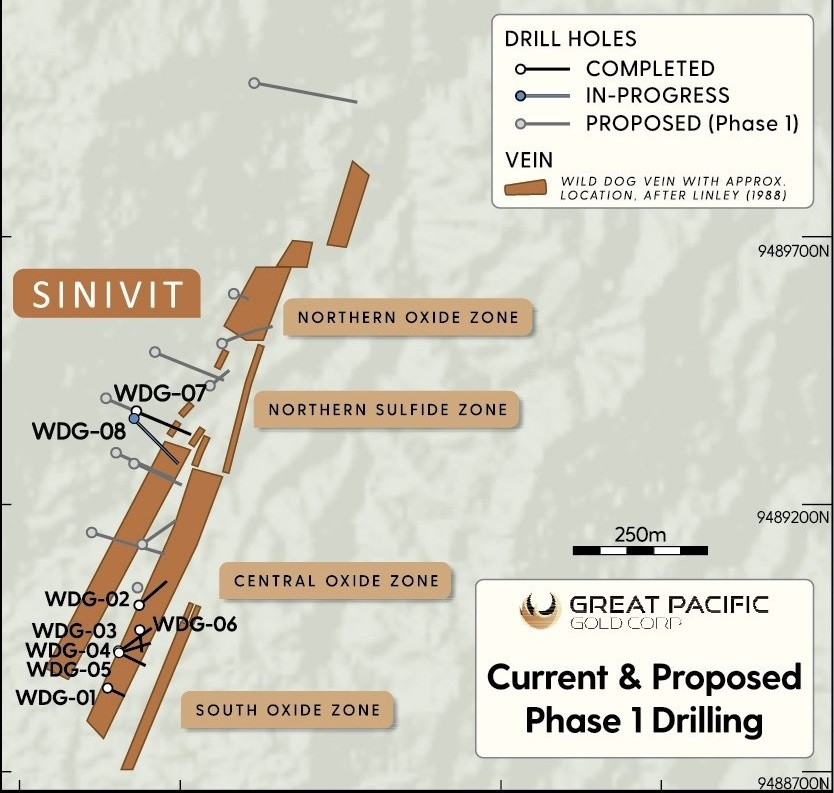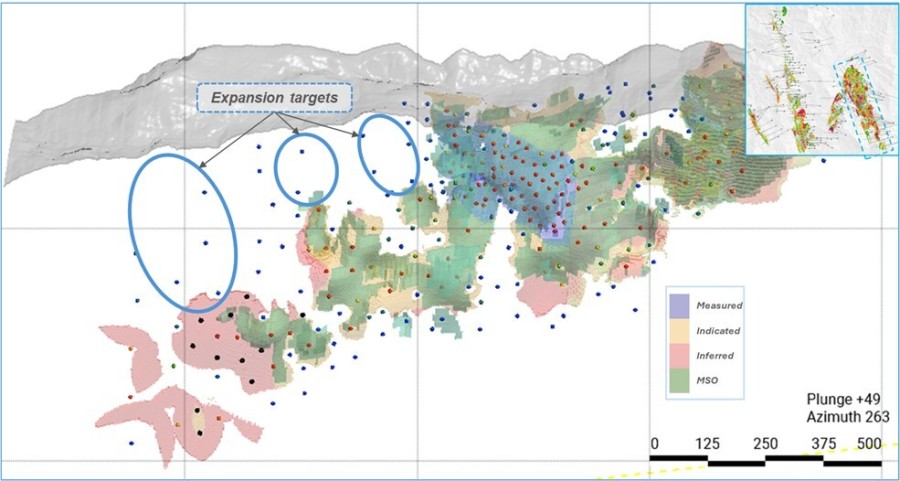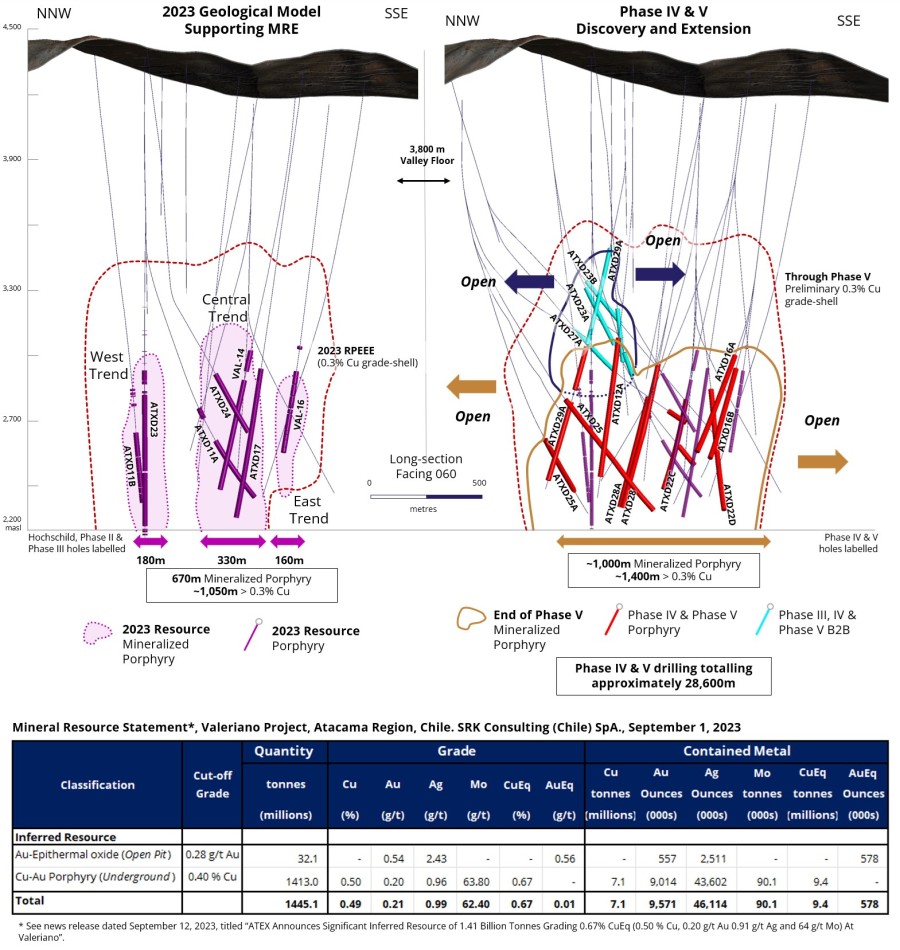Orex Minerals Inc. (TSX.V: REX) ("Orex"), has received preliminary metallurgical test results for samples from the Main Zone of the Boleras Silver Deposit at the Sandra Escobar Project in Durango, Mexico. This project is being advanced by Orex under an option agreement with Canasil Resources Inc. (TSX.V: CLZ) ("Canasil").
Results are now available for five samples, with increasing head grades, taken from across the Main Zone of the Boleras Silver Deposit. These results illustrate that recovery is grade dependent. A portion of the silver-bearing mineralogy is recoverable with leaching techniques, including hydrochloric acid (HCl), or sulphur dioxide (SO2) pre-treatment before cyanidation, and a portion is refractory, requiring more investigation. An extra high-grade sixth sample was also prepared for mineralogical work and was tested by the same methods at the Kemetco Research Inc. ("KR") laboratory.
Initial interpretation of the results suggests that there are three different hosts of silver; 1) a small amount of direct cyanide leachable silver (native silver and silver halides, cerargyrite and bromargyrite), 2) a varying amount of silver-bearing minerals leachable under pre-treatment conditions (argentiferous manganese and iron oxides, pyrolusite and aurorite), and a portion within silicate minerals.
Table 1. – Boleras Main Zone – Metallurgy – HCl Pre-treatment
| Preliminary HCl Leach Results | ||
| Sample | Head Grade - Ag (g/t) | Recovery – Ag (%) – KR |
| 1 #SE | 54 | 6.1 |
| 2 #SE | 98 | 14.5 |
| 3 #SE | 143 | 26.8 |
| 4 #SE | 192 | 29.4 |
| 5 #SE | 361 | 63.3 |
| 6 #SE | 1812 | 93.0 |

Table 2. – Boleras Main Zone – Metallurgy – SO2 Reduction Pre-treatment
| Preliminary SO2 Leach Results | ||
| Sample | Head Grade - Ag (g/t) | Recovery – Ag (%) – KR |
| 1 #SE | 54 | 4.6 |
| 2 #SE | 98 | 8.1 |
| 3 #SE | 143 | 22.7 |
| 4 #SE | 192 | 24.5 |
| 5 #SE | 361 | 58.7 |
| 6 #SE | 1812 | 83.0 |

Geological comparisons have been drawn between the mineralization styles at Sandra Escobar and the La Pitarrilla project of Silver Standard Resources Inc., located 75 km to the east. At La Pitarrilla, the Cordon Deposit is also an iron and manganese oxide hosted silver resource, within a rhyolite host rock unit, and is part of a much larger volcaniclastic complex. Structural and stratigraphic controls to mineralization are present in both locations. The Cordon Deposit has been shown to be a peripheral deposit to a much larger sulphide silver and base metals resource at depth. The Boleras deposit at Sandra Escobar is geologically similar to the Cordon deposit at La Pitarrilla and may be analogous in forming part of a larger mineralized system.
Orex's President, Gary Cope says, "While the preliminary metallurgical results are not ideal for the Boleras Main Zone, the comparisons between Sandra Escobar geology and that of the neighbouring La Pitarrilla project are encouraging."
Guidance for the metallurgical test work has benefited by the consulting services of Blue Coast Metallurgy of Parksville, BC, Canada.
Sandra Escobar Silver-Gold Project, Durango, Mexico
Sandra Escobar is situated north of the town of Tepehuanes, Durango, in the heart of the "Mexican Silver Trend", midway between the mining districts of Tovar and Guanacevi and is 75 km west of Silver Standard's La Pitarrilla. This prolific trend hosts some of the world's largest silver camps and deposits, including Fresnillo, Guanajuato, La Pitarrilla, La Preciosa, Real de Angeles and Zacatecas.
The project consists of 6,333 hectares of mineral concessions and covers multiple mineralized epithermal quartz veins and breccia structures. These veins form a high level silver-gold-base metals system, hosted in andesitic and rhyolitic rocks, centered on a large rhyolite dome complex in the north and silver systems in smaller rhyolite dome complexes to the southeast. All within a large caldera complex. Intense alteration zones and fluid flooding in permeable formations indicates the presence of bulk tonnage targets. Excellent infrastructure exists in the Sandra Escobar area, including paved road access, electrical power, water and manpower from nearby communities.
Orex has drilled 8,372 metres in 62 diamond drill holes in the southeastern region of the project. The first 59 diamond drill holes formed the basis for an initial Resource Estimate on the "Boleras Silver Deposit." At a "Base Case" of 45 g/t Ag cut-off, the Inferred Resource Estimate yielded 9.8 million tonnes grading 106 g/t Ag for a total of 33.3 million ounces of silver (See Orex news release of 31 October 2016). This Inferred Resource Estimate can be sub-divided into a high-grade domain of 0.7 million tonnes grading 288.4 g/t Ag, representing approximately 20% of the contained silver, plus an average-grade domain of 9.1 million tonnes grading 91.7 g/t Ag, representing approximately 80% of the contained silver.
Note: Mineral Resources are not Mineral Reserves and do not have demonstrated economic viability. There is no certainty that all or any part of the estimated Mineral Resources will be converted into Mineral Reserves. The estimate of Mineral Resources may be materially affected by environmental, permitting, legal, title, taxation, sociopolitical, marketing, or other relevant issues.
The technical disclosures contained in this news release have been approved by Ben Whiting, P.Geo., and Dale Brittliffe, P.Geo., both being "Qualified Persons" as defined in NI 43-101 on behalf of Orex.
ABOUT OREX MINERALS INC.
Orex is a Canadian-based junior exploration company comprised of highly qualified mining professionals. Orex has several current projects: the Coneto Gold-Silver Project in Durango, Mexico, a joint venture with Fresnillo PLC, the Sandra Escobar Silver Project in Durango, Mexico, a joint venture with Canasil Resources Inc., plus the Jumping Josephine Gold-Silver Project in British Columbia, Canada.
Source: Orex Minerals





